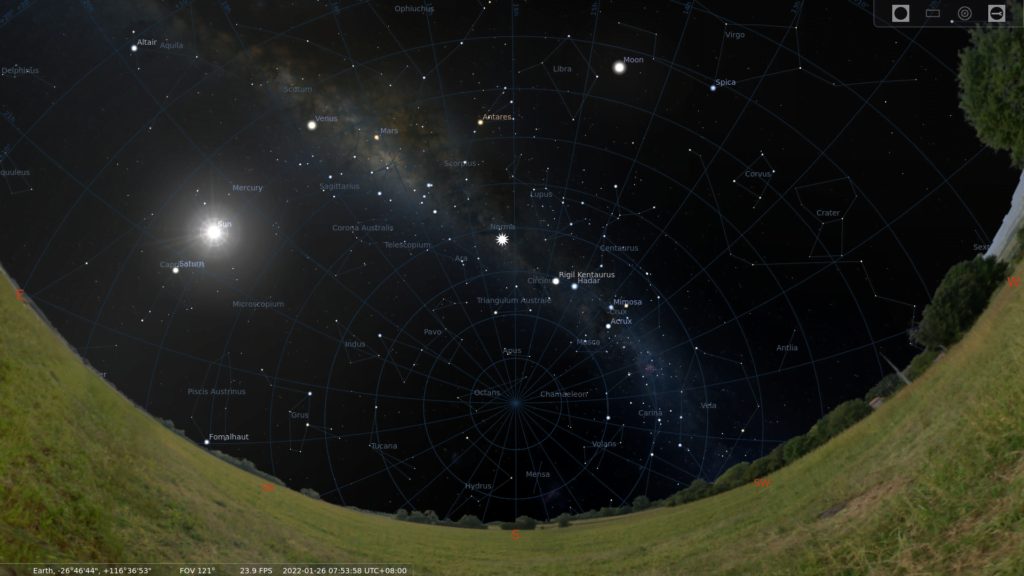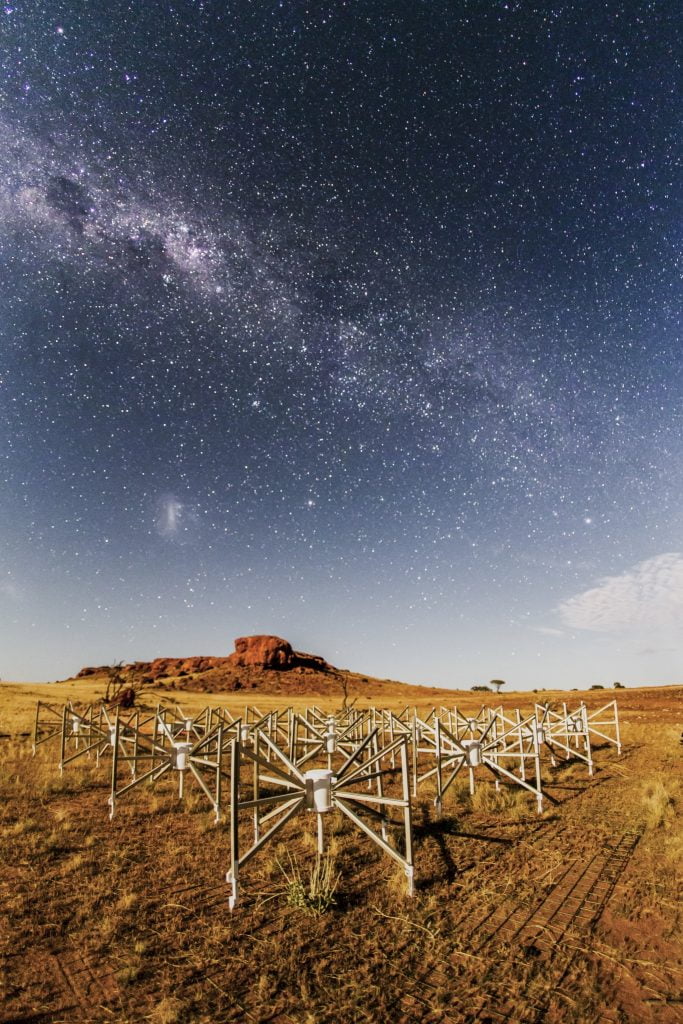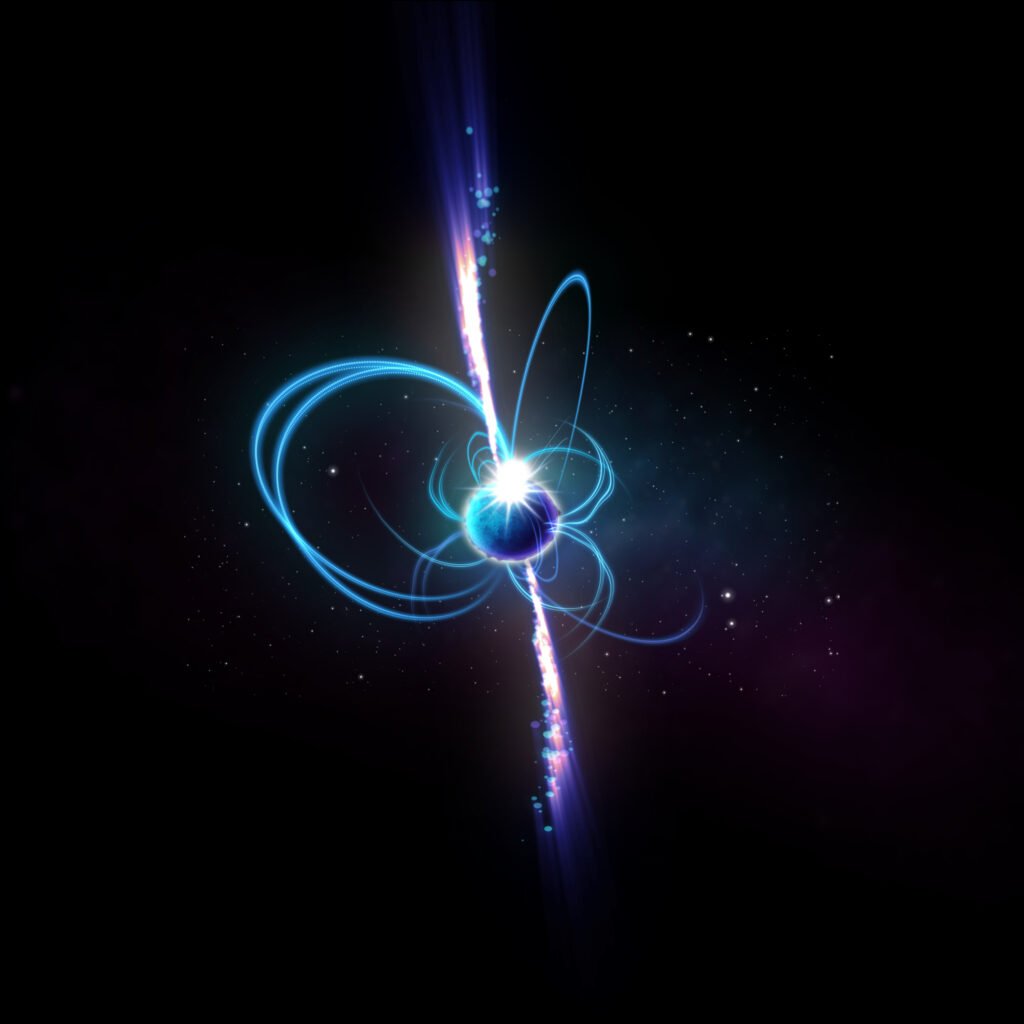In Our Galactic Backyard
"It's mind-bogglingly wonderful t at the universe is still full of surprises.""This is an entirely new kind of source that no one has ever seen before. And while we know the Milky Way must be full of slowly spinning neutron stars, no one expected them to be able to produce bright radio emissions like this.""It's a dream come true to find something so totally unexpected and amazing.""This object was appearing and disappearing over a few hours during our observations.""That was completely unexpected. It was kind of spooky for an astronomer because there’s nothing known in the sky that does that.""And it’s really quite close to us—about 4000 lightyears away. It’s in our galactic backyard.""It’s a type of slowly spinning neutron star that has been predicted to exist theoretically. But nobody expected to directly detect one like this because we didn’t expect them to be so bright.""Somehow it’s converting magnetic energy to radio waves much more effectively than anything we’ve seen before."Natasha Hurley-Walker, radio astronomer, Curtin University, International Centre for Radio Astronomy Research
"This is more likely to be the 'first of its kind' rather than 'one of a kind'.:"We are now monitoring this object using many different radio telescopes in the hope it switches 'on' again.""When studying transients, you’re watching the death of a massive star or the activity of the remnants it leaves behind."Gemma Anderson, Curtin ICRAR node astrophysicist, study co-author
 |
| The location of the source in the sky in January 2022, marked with a large white star marker. At this time of year, it is above the horizon during the day. Image source: Stellarium |
"It's incredibly bright when it's 'on'. It's one of the brightest radio sources in the sky.""It’s exciting that the source I identified last year has turned out to be such a peculiar object."
"The MWA’s [Murchison Widefield Array telescope] wide field of view and extreme sensitivity are perfect for surveying the entire sky and detecting the unexpected."Tyrone O'Doherty, Curtin ICRAR node doctoral student, study co-author
 |
| Tile 107, or “the Outlier” as it is known, is one of 256 tiles of the MWA located 1.5km from the core of the telescope. The MWA is a precursor instrument to the SKA. Photographed by Pete Wheeler, ICRAR |
In what may be the first known example of an 'ultra-long period magnetar', a type of neutron star -- a compact collapsed core of a massive star that became a supernova at explosion, highly magnetized and rotating slowly unlike fast-spinning neutron stars called pulsars that appear as though they're blinking off and on in seconds or milliseconds -- evidence has been detected of an object that had previously been thought to exist but never before detected.
A celestial object like none other seen before was spotted with the use of the Murchison Widefield Array telescope located in the outback of Western Australia as it unleashed gigantic energy bursts about three times hourly when viewed from Earth during a two-month period in 2018, according to researchers. It appears to the scientists studying it to be an absolutely dense star whose behaviour is quite unlike any ever seen previously, an astrophysical object hypothesized to exist but never before has proof been seen.
Continuous beaming of strong radio waves may be emanating from the object's north and south poles, the beam sweeping through the line of sight from Earth's vantage point, appearing to switch on every 18 minutes and 11 seconds for 30 to 60 seconds, then off again. A lighthouse with its rotating light seeming to blink on and off from the perspective of a stationary observer has a similar effect.
In cosmic terms, the object's location is relatively close to Earth -- about 4,200 light years in distance, the distance that light travels in a year; 9.5 trillion kilometres away. Astronomically speaking the object is in a category known as "transients" which are astrophysical objects appearing to turn on for limited time periods. A supernova is known as a 'slow transient', which can suddenly appear and then disappear months later with the dissipation of the stellar explosion. Rapidly blinking on and off, pulsars are known as 'fast transients'.
The search for transients between the two extremes had been until now, without success. Among the universe's densest objects, neutron stars, including pulsars, are approximately 12 kilometres in diameter, similar to the size of a city, but containing greater mass than our sun. A magnetar, a neutron star with an extreme magnetic field, has the potential to power the radio pulsations, according to the researchers' expectations.
 |
| Magnetar An artist’s impression of what the object might look like if it’s a magnetar. Magnetars are incredibly magnetic neutron stars, some of which sometimes produce radio emission. Known magnetars rotate every few seconds, but theoretically, “ultra-long period magnetars” could rotate much more slowly. Credit: ICRAR. |
Labels: Astronomy, Australia, Collapsar, Galactic Discovery, Magnetar, Neutron Star

0 Comments:
Post a Comment
<< Home